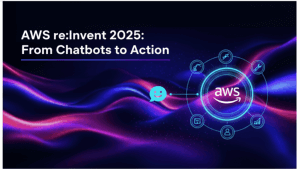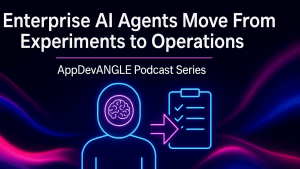At a recent multi-speaker strategy session hosted at Red Hat Summit 2025, the event showcased continued momentum in integrating AI into IT operations, accelerating automation, and reinforcing secure software development practices. The event highlighted RHEL Lightspeed, container-based system images, supply chain security, and organizational shifts toward generalist IT roles. Based on theCUBE Research’s ongoing industry data, the conversations aligned with a maturing enterprise appetite for AI-enabled operational tools, cost-aware modernization, and stronger compliance enforcement.
Let’s dive deeper into some of the key announcements from the event.
Red Hat’s RHEL Lightspeed was a focal point, representing a major step forward in embedding generative AI directly into Linux workflows. An enhanced command-line assistant—similar in behavior to a co-pilot—allows users to ask questions in natural language, returning recommended Linux commands without executing them. For example, users can pipe system command outputs or attach logs; the assistant interprets them or generates migration-ready shell scripts.
The feature leverages Red Hat’s documentation, Red Hat Advisory Tool (RATA), an internal knowledge base. Customer feedback suggests a strong demand to integrate organizational-specific procedures into the AI model. Early usage emphasizes accelerated troubleshooting and improved onboarding, especially as organizations hire fewer entry-level roles—a trend echoed in theCUBE Research survey of roughly 850 IT leaders, where 67% reported shifting from hiring specialists to generalists.
Impacts of Insights and Image Builder
Another Lightspeed feature, integrated into Insights Image Builder, offers package recommendations in a UX reminiscent of e-commerce: “If you use this package, you may also need that one.” This eases the challenge of discovering relevant packages among the thousands in RHEL’s ecosystem. Future iterations may evolve toward a curated “mini marketplace” experience, blending user guidance with automated best-practice enforcement.
Across the broader Red Hat portfolio, AI and automation are becoming symbiotic. OpenShift AI and RHEL AI are designed to scale from proof-of-concept to production, with Ansible acting as the “glue” binding infrastructure layers and workflows. Ansible’s automation of “Day 2” operations—what happens after deployment—is increasingly essential. Organizations see AI not just as a development accelerator, but as a foundational component of long-term operational resilience.
In terms of migration and modernization, many enterprises initially rushed to exit legacy platforms like VMware. However, what was expected to be a mass exodus has become a phased transition. Enterprises now focus on automating VMware operations to reduce manual effort and extend value from existing assets. theCUBE Research data reveals that 73% of organizations renewed their VMware contracts for up to three years but are actively exploring alternatives, with plans to reassess within 12 to 18 months. Migration is no longer a one-time IT initiative; it requires continuous operations teams with evolving skill sets.
Red Hat experts noted a growing emphasis on simplifying tools to support generalist roles, such as cloud administrators replacing network specialists. According to theCUBE Research’s enterprise modernization index, CIOs prioritize three core challenges: reducing complexity, closing skill gaps, and managing costs. With FinOps entering strategic conversations, enterprises are balancing modernization with long-term budget discipline.
Shifting Developer Responsibility
Another standout discussion focused on the shift in developer responsibilities. Historically, developers wrote and compiled code. Now, many act as aggregators—assembling open-source components, managing APIs, and orchestrating modules. The future, according to participants, may not require developers to write code at all, as AI-assisted assembly becomes the norm. However, this evolution raises concerns about diminishing entry-level opportunities, as AI increasingly handles the simpler, educational tasks once reserved for junior staff. Universities are responding: NC State, for example, has introduced majors such as “Psychiatry in Computing” to prepare students for a world blending behavioral science, language models, and engineering.
Compliance and regulation emerged as a pressing theme. With CRAA (Cyber Resilience Act for Applications) mandates taking effect by December 2027 and compliance reporting beginning as early as September 2026, organizations must automate compliance checks. Non-compliant apps will be rejected automatically—a shift that redefines DevSecOps from a best practice to a mandatory capability. The emergence of AI does not absolve responsibility: participants cited a case in which an airline chatbot mistakenly offered tickets at the wrong price, only for the airline to be held accountable. This drives the need for policy frameworks and human oversight.
Red Hat’s Response to Container System Images
Red Hat’s innovations around container-based system images offer new ways to address patching, consistency, and security. Moving away from static “gold images,” the BootC technology enables full-system container images—including the kernel and firmware—to be updated or rolled back via container tags. This modernizes image management and provides traceability. While the approach improves consistency, it introduces a risk: shared base images can become single points of failure if compromised. Recovery is possible via image rollback, but this requires strict base image governance. Microservice architectures built on slimmed-down, shared images can minimize attack surfaces while streamlining updates. BootC’s promotion to CNCF sandbox status suggests growing community traction.
Supply chain security and software pipeline integrity were recurring concerns. Participants noted that accelerated release cycles—pushed by DevOps KPIs—often skip critical validation stages. theCUBE Research data shows a mismatch between desire and readiness: while 24% of organizations aim to release code hourly, only 8% achieve it. The result is a “push-and-pray” culture, where insufficient testing exposes organizations to security breaches and breaking changes. SBOMs, version control, and traceable sign-offs are becoming minimum standards. A secure-by-design supply chain with signed firmware, containers, and boot stacks is the “holy grail” of operational integrity. Only a handful of experts globally can implement such a system, but Red Hat’s roadmap aims to democratize this capability.
Advancing Secure Automation and Edge Innovation Through Customer-Centric, AI-Driven Roadmaps
Red Hat seems to be aligning its future RHEL Lightspeed roadmap with strategic priorities in automation, edge computing, and secure AI integration. By focusing on emerging technologies like WebAssembly and enhancing customer-driven workflows, the company aims to deliver more intelligent, secure, and adaptable infrastructure solutions.
From theCUBE Research perspective, the strategic impact of Red Hat’s forward-looking initiatives reflects a deliberate push to align enterprise Linux, automation, and edge innovation with customer priorities and market dynamics. By exploring Model Context Protocol (MCP) integration for permission-based command execution in RHEL Lightspeed, Red Hat strengthens its position in secure, AI-enhanced IT operations.
The investigation into extending RHEL Lightspeed with internal knowledge and customer workflows further personalizes and contextualizes automation, potentially increasing IT efficiency and compliance. Automation frameworks for WebAssembly (WASM) at the edge signal a commitment to lightweight, high-performance deployments critical for latency-sensitive applications. Addressing base image security and rollback capabilities directly targets software supply chain risks—an escalating concern for regulated industries.
Lastly, consolidating customer feedback loops to prioritize roadmap features ensures that product development remains tightly coupled with user demand and business outcomes. Collectively, these efforts position Red Hat to lead in hybrid cloud automation and trusted open source infrastructure, driving adoption and differentiation in a competitive market.
Forward Outlook
Red Hat’s latest developments point to a future where AI, automation, and compliance are tightly integrated across IT operations. The conversations reflect a broader industry trend: organizations must modernize securely, incrementally, and in ways that enable less specialized teams to operate complex systems. As regulatory mandates loom and workloads shift to containerized, AI-assisted environments, Red Hat’s platform-centric, open-source approach positions it well to lead in enterprise transformation.
Looking ahead, Red Hat aims to deepen the model context protocol (MCP) integration to enable secure, permission-based command execution within RHEL Lightspeed, ensuring greater control and auditability. The company also plans to expand Lightspeed’s capabilities by incorporating internal knowledge bases and customer-specific workflows, enhancing its contextual accuracy and enterprise value.
As edge computing grows in strategic importance, Red Hat is expected to invest in developing robust automation frameworks to support WebAssembly (WASM) deployment at the edge. To strengthen its container-based infrastructure, Red Hat will continue addressing security and rollback concerns tied to common base images, focusing on resilience and traceability. Finally, by consolidating customer feedback mechanisms, Red Hat intends to refine its roadmap, aligning AI and container innovations with evolving enterprise needs.



